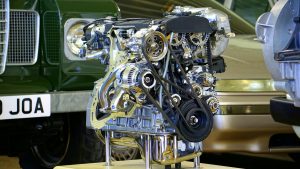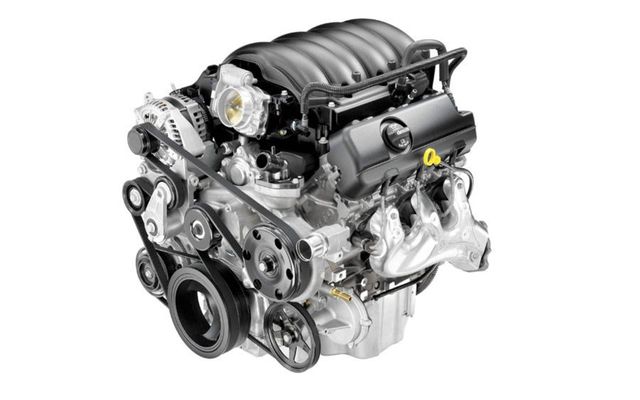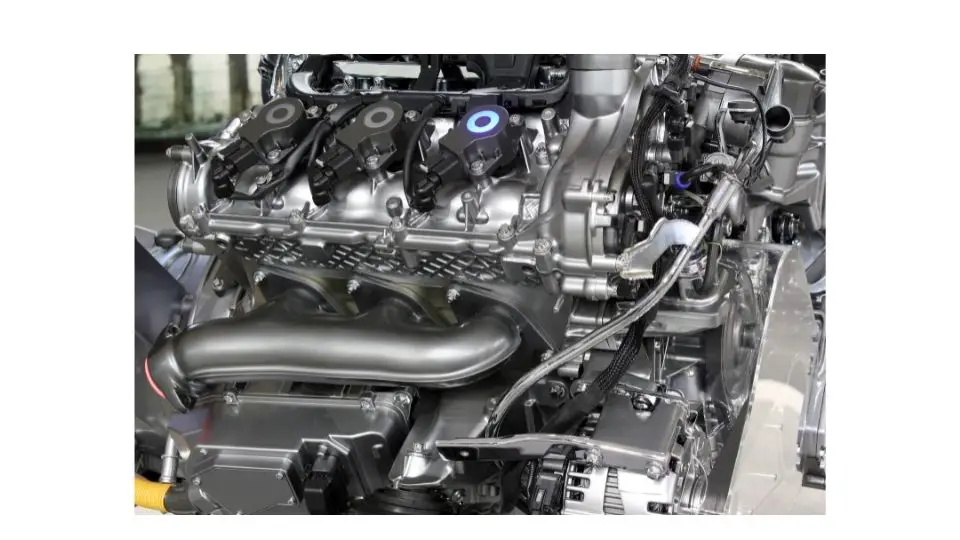The Chevy 4.3 V6 Vortec is considered one of the most reliable engines ever made by General Motors (GM). It runs on a lot of mid-size trucks and has been known to clock well over 300,000 miles based on many Chevy owner reviews. Still, it’s far from perfect. In this guide, I’ll go over the engine’s overall reliability and common problems to look out for. But first, a bit of context.
Chevy 4.3 V6 at a glance

The Chevy 4.3-liter V6 has two distinct eras. The older “Vortec” pushrod 4.3 served in trucks, SUVs, and vans from the late 1980s through early 2014. Then GM launched a clean-sheet EcoTec3 4.3 (RPO LV3) for the 2014 Silverado/Sierra and later for full-size vans (a non-AFM variant, LV1). Here’s a quick overview of both:
The classic 4.3 “Vortec” (1986–2014)
A 90° small-block-derived V6 known for longevity and simplicity. Its final years were in trucks/vans up to early 2014, closing the chapter on a small-block lineage that began in 1955.
The modern 4.3 EcoTec3 (2014–2021 trucks; vans ongoing)
GM’s Gen-V EcoTec3 LV3 debuted for 2014 Silverado/Sierra with direct injection (DI), continuously variable valve timing (VVT), and cylinder deactivation (AFM) to run as a V-4 under light loads. GM documentation confirms DI + AFM on the 4.3. The engine made 285 hp and 305 lb-ft and was the base engine on work trims until it was dropped from Silverado/Sierra after the 2021 model year (the vans kept a version).
Is the Chevy 4.3 reliable?
Short answer: Yes—with generation-specific caveats.
-
Vortec era (pre-2014): When maintained, these engines routinely run very high mileage. Most long-term complaints cluster around fuel-injection hardware and intake gaskets rather than bottom-end failures.
-
EcoTec3 LV3 (2014–2021): Strong block/heads and modern controls, but you must account for DI (intake-valve carbon over time) and AFM (potential lifter issues). That said, many owners report uneventful, long-life service from the LV3.
Common Chevy 4.4 problems by generation (and how to spot them)
Vortec 4.3
1) CSFI/CPI “spider” injection troubles (and the MFI cure)
The factory Central SFI (CSFI) poppet “spider” is notorious for sticking poppets and internal regulator leaks as mileage and varnish build up. The result is long cranks, rich smell, rough idle, random misfires (often P0300), and even fuel dilution in the oil. GM addressed this with a service conversion to true Multi-Port Fuel Injection (MFI)—a redesigned spider that back-services the CSFI unit. If a seller has already done the conversion, it’s a big plus for reliability.
How to spot it fast
-
Cold start should be clean, without extended cranking or raw-fuel odor.
-
Scan for P0300 and look at long-term fuel trims (excessively negative trims can hint at leaking poppets/regulator).
-
Pop the upper plenum (if you’re inspecting in depth) and check for the updated MFI spider part; many owners document the swap because it’s considered the durable fix.
2) Lower intake manifold gasket leaks
Age + heat cycles make the composite gaskets at the intake corners seep. Early signs are small coolant losses with no external puddles, faint “sweet” smell, or tan sludge in the oil. Left alone, seepage can progress to mixing coolant and oil or misfires from vacuum leaks. Owners and techs widely report this as a very common Vortec failure mode—worth checking on any older 4.3.
What to look/listen for
-
Unexplained coolant drop and stained residue at the intake manifold corners.
-
Mayonnaise-like oil cap sludge (short-trip engines show this too; confirm with a cooling-system pressure test).
-
Rough idle that improves as the engine warms (gasket expansion can temporarily seal small vacuum paths).
3) Distributor cap moisture/corrosion → misfire/stall
On late-’90s/early-’00s trucks with the traditional distributor, poor cap ventilation lets moisture/ozone collect, corroding terminals and causing misfires, stalling, or a no-start with P0300. GM issued guidance to inspect the distributor‐cap ventilation holes and replace cap/rotor where corrosion is present. If a truck runs poorly after heavy rain or a wash, suspect this first.
DIY checks
-
Pull the cap and inspect for white/green fuzz on terminals and a damp smell.
-
Verify the vent screens aren’t clogged; replace the cap/rotor with quality parts if there’s any doubt.
-
After repairs, clear codes and road-test—wet-weather misfires should disappear.
EcoTec3 4.3 LV3

1) AFM lifter collapse (LV3 only)
The 4.3 LV3 uses Active Fuel Management (AFM) to run as a V-4 under light load. Across GM’s EcoTec3 family, AFM lifters can occasionally stick or collapse, triggering a tick and misfire (commonly P0300). GM’s service information describes AFM lifters that unlock immediately on start or remain mechanically collapsed/stuck. In practice, repairs range from lifter/cam replacement to a full AFM delete during overhaul; good oil hygiene reduces risk. Note: The LV1 van variant does not have AFM, which removes this specific failure path.
Early signs and quick tests
-
Persistent ticking that doesn’t go away warm.
-
Power-balance or Mode $06 data showing repeat misfire on an AFM cylinder.
-
Compression on the affected hole can be low if the lifter is unlocked/collapsed.
2) Direct-injection side-effects: intake-valve carbon & rough idle
Like many DI engines, the LV3 can develop intake-valve deposits because fuel no longer washes the valves. GM’s multi-brand bulletin 16-NA-383 documents rough idle, extended crank, or P030X misfires due to excessive carbon on valves, with an approved upper-engine cleaning procedure (and a reminder to use Top Tier gasoline). Some owners opt for manual walnut blasting around 60–100k miles when symptoms appear; others never need it.
What you’ll notice first
-
Rough cold idle, light stumble on tip-in, or intermittent misfire with no obvious ignition issue.
-
Hard starting after short sits, improving once fully hot.
-
Scan data may show misfires concentrated at idle but not under load.
3) Routine maintenance nuance that impacts reliability (oil spec matters)
The LV3 was launched with a firm requirement: SAE 5W-30 that meets dexos1, with an increased ~6-quart capacityversus prior generations and an Oil Life Monitor to adjust intervals by use. Following this guidance is not busywork; correct viscosity and fresh oil support lifter operation and DI cleanliness. When shopping used, documentation that the right oil was used on time is a green flag.
Quick owner checklist
-
Use dexos1 5W-30 and respect the OLM; shorten intervals for severe duty.
-
Keep air and PCV systems healthy—small issues can ripple into idle quality on DI engines.
-
If you tow/idle a lot, track idle hours and consider earlier fluid service across the drivetrain.
How Long Can the 4.3 V6 Last?
As far as longevity is concerned, this is one of the best engines out there. You can expect to go past the 200,000 mile mark with this car. There are accounts of users putting more than 300,000 miles on it and still running great. It’s no exaggeration that this is one of the best engines that Chevy has released. If you manage to service it at regular intervals making sure to do oil and filter changes at the recommended intervals, there is no reason why you won’t be able to have this engine perform well for a really long time. There’s an account on the forums of an owner of a truck running a Chevy 4.3 V6 engine who sold it to his cousin on the condition that he would get first option to buy it back if he decided to sell it. His cousin did not honor this and sold it to someone else. That person sold it to someone else then he to someone else. It was eventually repossessed and he was able to buy it back 4 and half years later at 300,000 miles. At the time of posting, he had run it for another 4 years and it still ran great. By this time, the mileage was well over 400,000 without any noticeable drop in performance. I’m sure you will agree that that’s a phenomenal performance record.
Conclusion
To cap it off, the Chevy 4.3 V6 is a very reliable engine. In fact, it’s one of the most reliable engines on the market. If you value a simple, durable, understressed truck motor, the Chevy 4.3 still makes sense, but your chosen option still matters:
-
Choose a Vortec 4.3 if you’re comfortable verifying/doing the known fixes (MFI spider, intake gaskets, distributor cap) on a lower-cost older truck. Once addressed, these engines are famously long-lived.
-
Choose an LV3 4.3 if you want a newer-tech engine with DI/VVT and solid torque. Keep to 5W-30 dexos1, watch for AFM lifter symptoms, and plan for DI maintenance only if symptoms arise. Vans with LV1 avoid AFM altogether.

Tomas is a retired Chevy Auto Technician that brings decades of hands-on experience and expertise to the table. He’s also a father to two incredible daughters. He enjoys using his knowledge and experience to help you solve and find reliable information on Chevrolet vehicles. Whether it’s troubleshooting engine problems or providing tips for maintenance, Thomas is committed to helping Chevy owners keep their vehicles running smoothly and safely.



